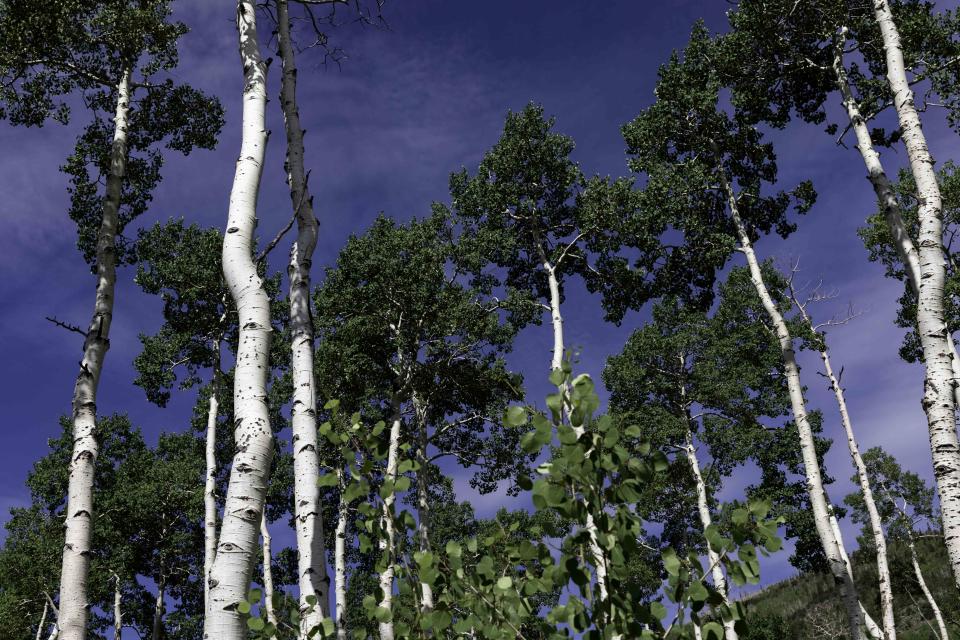Listen to the Sounds of the Largest Tree on Earth
From leaves to roots, a sound artist has recorded the murmurings of the massive Pando aspen grove.

While coastal redwoods rank as the tallest trees on the planet, Utah's "trembling giant" transcends the titles. Known as the Pando aspen grove, it is actually a single massive root system with around 47,000 genetically identical stems that create a grove of trees that keep the root system going. As explained by the nonprofit group Friends of Pando, the trembling giant takes the prize as the largest tree by weight, species, and land mass. And with at least 9,000 years under its belt, it is one of the Earth's oldest living organisms.
What a creature!
Anyone who spends time pondering the mysteries of superlative organisms like Pando may marvel over the trembling giant's life history and day-to-day goings on. Scientists, of course, study these questions. But Jeff Rice and Lance Oditt have taken a different route of exploration. Rice is an audio engineer, journalist, and sound designer with a strong interest in wildlife recording, while Oditt is the executive director of Friends of Pando.
On May 10, 2023, at the 184th Meeting of the Acoustical Society of America. the pair described their work of creating an "acoustic portrait" of Pando.
“Pando challenges our basic understanding of the world,” said Rice. “The idea that this giant forest could be a single organism defies our concept of the individual. Its vastness humbles our sense of space.”

In 2022, while serving as Friends of Pando's artist-in-residence, Rice used a variety of microphones to record Pando’s leaves, birds, and weather.
“The sounds are beautiful and interesting, but from a practical standpoint, natural sounds can be used to document the health of an environment,” he said. “They are a record of the local biodiversity, and they provide a baseline that can be measured against environmental change.”
Listen to Pando's soothing soundscape
Aspen trees are notable for any number of traits, but perhaps none more so than their quivering leaves. Rice was particularly interested in the sound of vibrations passing through the tree during a windstorm. Given that the root system extends some 90 feet below the surface, he wanted to see if they could record the sound of Pando’s root system. Oditt identified potential recording locations, and they went to work using hydrophones.
“Hydrophones don’t just need water to work,” said Rice. “They can pick up vibrations from surfaces like roots as well, and when I put on my headphones, I was instantly surprised. Something was happening. There was a faint sound.”
Listen to the sounds beneath the tree
They explain that the sounds are not conclusively from Pando’s root system, "but a handful of experiments support the idea." They were able to demonstrate that vibrations can pass from tree to tree through the ground—which makes sense. When they banged on a branch 90 feet away, the hydrophone registered with a soft thump.
“It’s similar to two cans connected by a string,” Rice said. “Except there are 47,000 cans connected by a huge root system.”
Likewise, during a thunderstorm, sounds recorded by the hydrophone increased in relation to the intensity of the storm.
“The findings are tantalizing. While it started as art, we see enormous potential for use in science. Wind, converted to vibration (sound) and traveling the root system, could also reveal the inner workings of Pando’s vast hidden hydraulic system in a nondestructive manner,” said Oditt. “Friends of Pando plans to use the data gathered as the basis for additional studies on water movement, how branch arrays are related to one another, insect colonies, and root depth, all of which we know little about today.”

